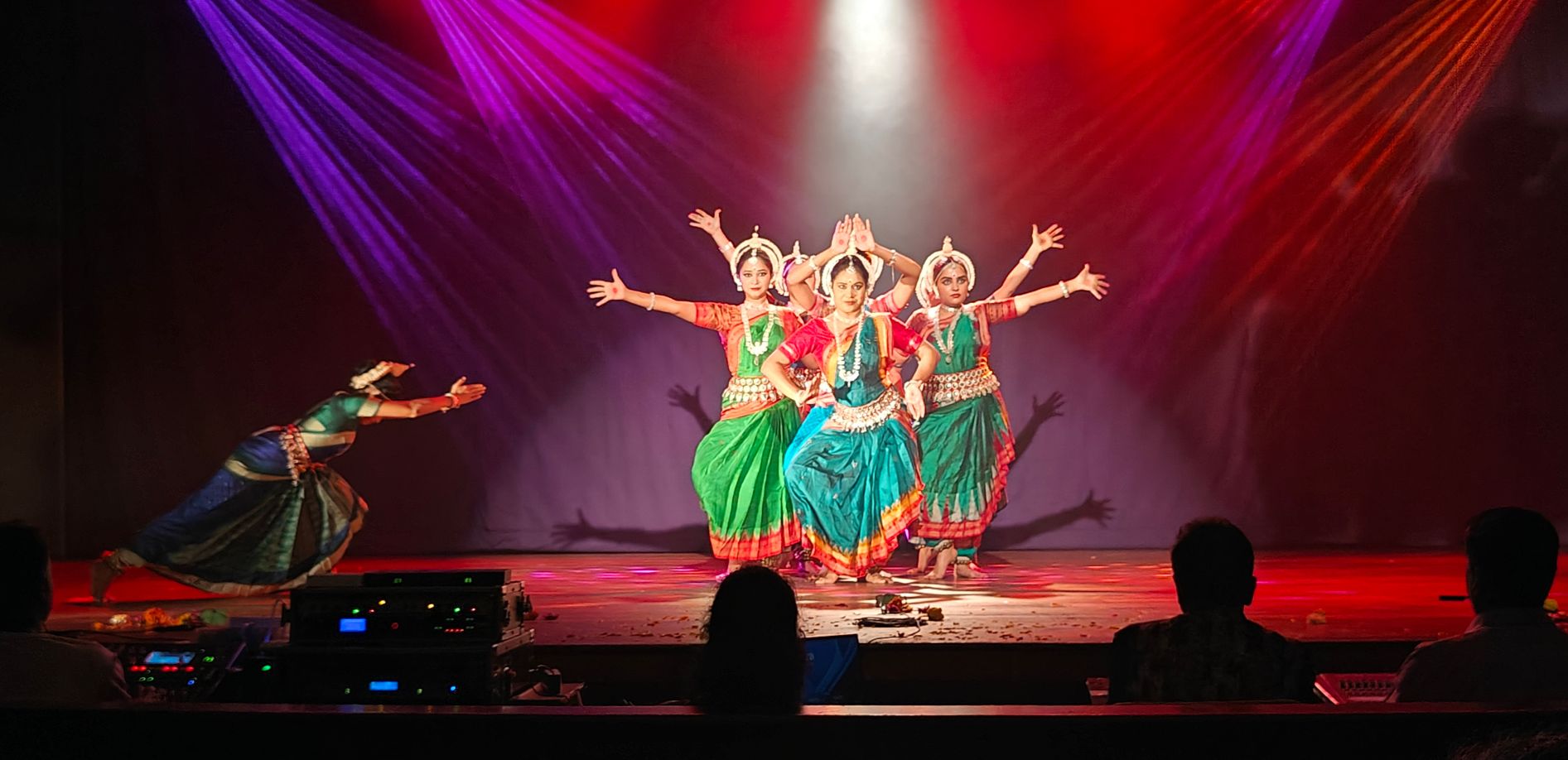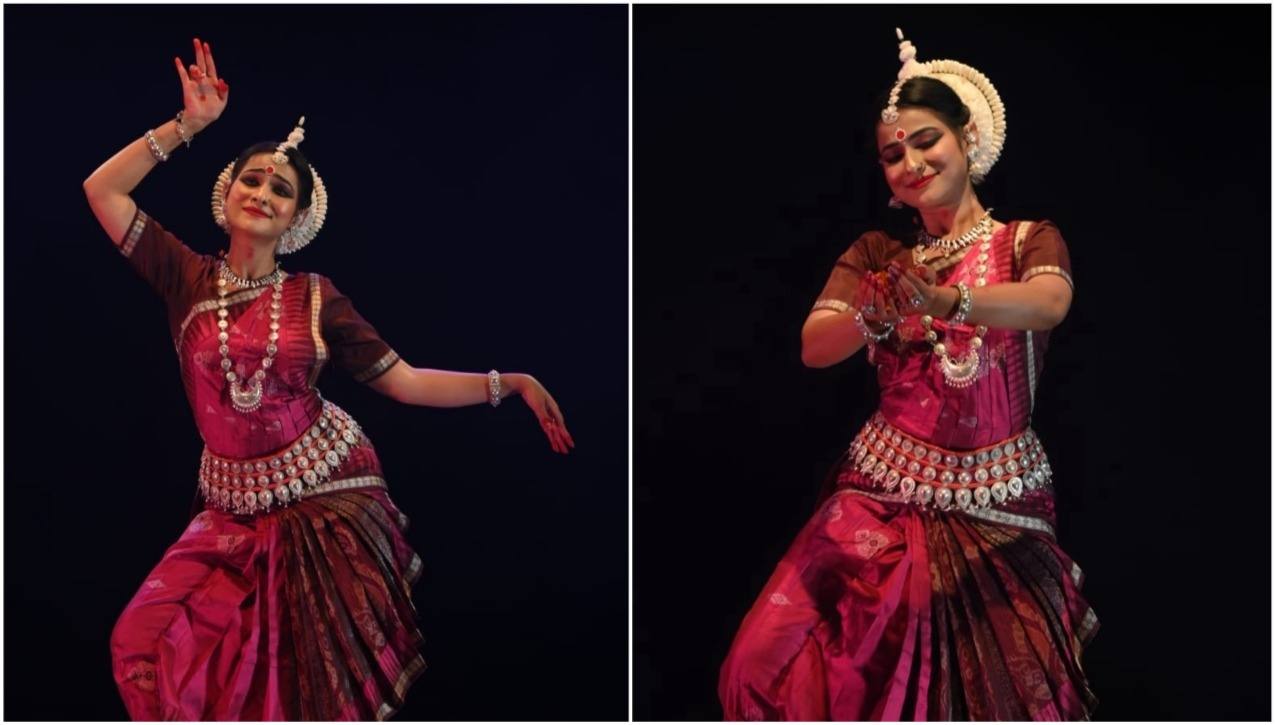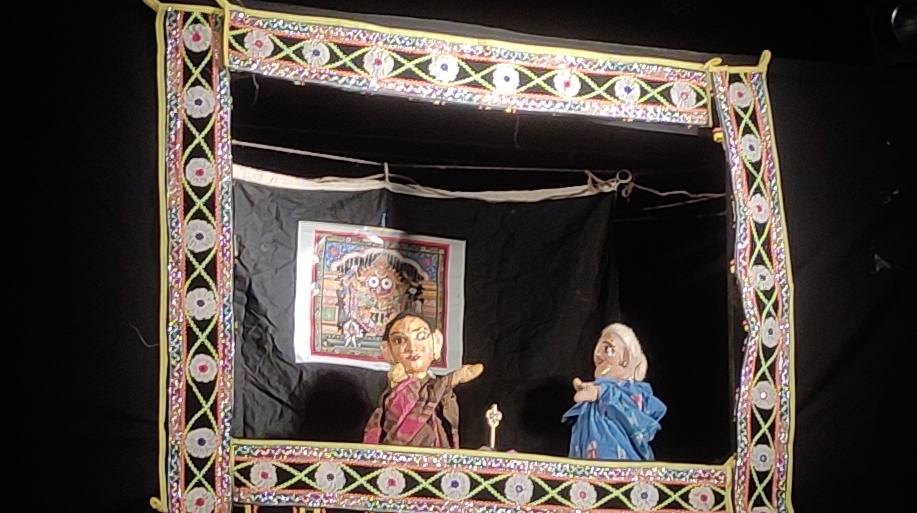Mumbai: If the queen of Odissi dance Sanjukta Panigrahi were alive, she would have celebrated her 81st birthday on August 24.
As the date draws near each year, dancers across the globe bow their heads in remembrance, and stages lit up with festivals dedicated to her immortal legacy.
Among the festivals, two hold a pride of place. They are ‘Sanjukta Panigrahi Yuva Mahotsav’, organized in Mumbai by Smitalay, an Odissi dance institution established by eminent Odissi dancer Jhelum Paranjape and ‘Tumari Smrutire’, held in Bhubaneswar by Sanjukta and Raghunath Panigrahi Cultural Heritage Foundation, in association with Department of Odia Language, Literature and Culture and Guru Kelucharan Mahapatra Odissi Research Centre.
This year, Smitalay organized its 22nd edition of ‘Sanjukta Panigrahi Yuva Mahotsav’ at Veer Savarkar Auditorium, Shivaji Park, Mumbai, on August 22.
The bond between Sanjukta Panigrahi and Jhelum Paranjape ran deep. After the untimely demise of Sanju Nani, as she is fondly called by Jhelum, in 1998, Jhelum decided to start a festival in her memory. Since Sanju Nani was a staunch believer in nurturing young talents, the idea of launching a youth festival came to her mind.
The first Sanjukta Panigrahi Yuva Mahotsav was held on 24th August 2004, marking her 60th birthday. What started for Odissi dancers soon blossomed into a platform inviting dancers from all classical dance styles.
Over the years, the festival has carved a niche in the annual cultural calendar of Mumbai.
The evening commenced with the auspicious lighting the lamp ceremony by dignitaries like Bharatanatyam Guru Sharada Ganesan and Kathak Guru Ranjana Phadke. The festival witnessed the presence of stalwarts like Bharatanatyam Guru Deepak Majumdar, Kathak Guru Archana Jogalekar and dance critic Vijay Shankar.
The stage was aesthetically decorated with a huge portrait of Sanjukta forming a poignant backdrop to the stage.
The first performer of the evening was Dipjoy Sarkar, a young promising Odissi dancer from Kolkata.
A disciple of Guru Smt. Sharmila Biswas, Dipjoy commenced his performance with Ramastakam, set to Raga Misra and Tala Jhampa, choreographed by Guru Smt Biswas, music composed by Prafulla Kar and rhythm by Mardala exponent Guru Dhaneswar Swain. He followed it up with ‘Gativilas’, based on Raga Yog and Tala Ektali, choreographed by Guru Smt Biswas, music composed by Debashis Sarkar, Ramesh Chandra Das and Bijay Kumar Barik.
His recitals, marked by precision, grace and fluidity, gave the evening a befitting start, lifting the mood of the audience.
Then, the art lovers were treated to a solo Kathak recital by Vedanti Bhagwat Mahadik. A young and talented Kathak performer from Pune, Vedanti received her initial training under Smt. Archana Sunjay and later from Late Guru Nityasree Madhurita Sarang. She has received special training from Guru Pt. Rajendra Gangani and is currently under the tutelage of Smt. Rajashree Shirke.
She commenced her recitals with ‘Ganesh Vandana’, moved on to present a fine display of ‘12 beats’ before concluding with an ‘Abhinay Paksh.
The items, explored the rhythmic nuances of the dance style, left the connoisseurs glued to their seats. The highlight of her performance was her complete control of technique and neat footwork.
Bharatnatyam dancer Raja Duta of Kolkata took the stage next. A disciple of illustrious Gurus like Smt. Anita Mallick and Padmabhushan C. V. Chandrashekhar (Chennai), Raja is currently learning and working with the founder of Kalabharati Legacy (Montreal), Dr. Mamta Neogi Nakra.
He commenced his recital with ‘Gaiye Ganapati’, in praise of Lord Ganapati, the remover of obstacles, the giver of wisdom, and the one who blesses devotees with prosperity and happiness. The item was based on Ragam Kalavati and Taalam Adi, choreographed by Padma Bhushan recipient Guru C V Chandrashekhar.
The next in line was traditional ‘Padam’ set in ragam Hindolam and Taalam Adi, choreographed by Sri Badari Divya Bhusan. This ‘Padam’ has been taken from ‘Ramanataka’, which depicts an episode of Ramayana where Kaikeyee, after being prodded by Manthara, claims justice to King Dasaratha for her own son Bharata and demands his coronation instead of Ram’s.
His concluding item was ‘Thillana’, set to Ragam Hindolam and Taalam Adi, choreographed by Padmashri Guru Geeta Chandran. Raja’s performances reflected his deep internalization of the dance form. His neat performances were visual delight indeed, having the art lovers engaged all throughout his performances.
Then came the highlight of the evening. The host institution Smitalay’s well-trained seven dancers (Dipali Tikam, Rupali Kadam, Manisha Bowalekar, Komal Bhairi, Shambhavi Kasbekar, Sayali Ganvir and Anika Chonkar) stole the limelight with their powerful group production ‘Dastaan Veer – Sant Shivaji Ki’.
Inspired from Cordova Joyful learning, the scintillating presentation depicted important episodes in Chhatrapati Shivaji Maharaj’s life, right from his birth, to his training in martial arts by Dadoji Kondeo, his pledge for his country along with his friends like Tanaji, Bahirji etc (when they cut their thumb and make a ‘tilak’ on their foreheads with that blood), his tactics of ‘ganimi kawa’ – guerilla warfare, how he killed Afzal Khan, how he escaped from Aurangzeb, how he built fortresses and created the Maratha navy etc.
The item, written by Dr. Bharati & Bunckim, music composed and arranged by Bunckim, choreographed by Jhelum Paranjape and rhythm by Rohan Dahale, left the art lovers hooked to their seats. While Jateen Sahu, Rohan and Bunckim lent good support as vocalists, Bunckim handled the Keyboard and Guitar.
The production, marked by brilliant space management, synchronization, dancers’ controlled body language and abhinaya skills, stood testament to the hard work Guru Jhelum Paranjape and her disciples put into it. The art connoisseurs had an engrossing viewing experience.
The fifth item of the evening was a Bharatnatyam recital by Nandini Ganesan, the grand-daughter and disciple of Nartanacharya Guru Shri Kalasadan Mani. Having had her initial training under her mother Smt. Sharada Ganesan and uncle Shri. Natrajgopal, she has undergone advanced training under the watchful eyes of Padma Shri recipient Guru Smt. Chitra Visweswaran.
She commenced her recital with ‘Kali Kauthuvam’, set to Ragam Hamsadhawani and Taalam Khanda Chapu, choreographed by Chitra Visweswaran and vocal by Pandit R Visweswaran, ensuring an auspicious start to her recital. Her concluding item was ‘Shiv Panchakshara Stotram’ of Adishankara Bhagvadpada, based on Ragam Ragamalika and Taalam Khanda Chapu, choreographed by Sharada and Nandini Ganesan.
Her mastery over the intricacies of the art form left the art lovers spellbound.
The sixth item of the evening was an Odissi recital by an agile Ananya Parida, a disciple of Padma Shri recipient Guru Aruna Mohanty.
She started learning Odissi Dance at a very tender age of four under the tutelage of Guru Yudhisthir Nayak and Smt. Rojalin Mahapatra.
Beginning with ‘Jagannath Ashtakam’-written by Adi Guru Shankaracharya, choreographed by Guru Aruna Mohanty, music composed by Guru Bijaya Kumar Jena and rhythm by Guru Dhaneswar Swain & Guru Bijaya Kumar Barik-she offered a graceful invocation to Lord Jagannath, further lifting the mood of the evening.
She followed it up with an abhinaya ‘Madhave, Ma Kuru Manini’ from Jayadeva’s Gita Govinda. Her excellent portrayal of Radha being persuaded by the sakhi to shed her arrogant and meet Krishna brought the characters prominently visible on the stage.
Based on Raga Saveri and Tala Ektali, the item was choreographed by Guru Aruna Mohanty and music composed by Dr Subash Pani.
The finale came from Mumbai’s Tejashree Vaidya, who rounded off the evening with enthralling Kathak performances. She opened her presentation with ‘Shiva Vandana’, moved on to present ‘Jhap Taal’ (10 beats) before wrapping up with ‘Bhav Paksha’.
Her graceful movements and neat footwork were evident when she performed tora, tukra, paran and other elements in the Kathak repertoire.
A disciple of Guru Ranjana Phadke and a Nrutya Alankar from the Akhil Bharatiya Gandharva Mahavidyalay, Tejashree is the founder – director of Tejashree’s Shree Kala Nrutyalaya (TSKN), training students for the past 10 years.
Smitalay itself steeped in history. It is the very first Odissi dance institution following Guru Kelucharan Mohapatra’s lineage, founded by Jhelum Paranjape, in the memory of her close childhood friend late actor Smita Patil.
Smita and Jhelum had started training in Odissi together under Guru Shankar Behera. Smita shifted to films and made it her career, while Jhelum stuck with Odissi later training under Guru Kelucharan Mohapatra, and made Odissi her career.
Today, Smitalay has blossomed into a cultural beacon under the umbrella of Sane Guruji Arogya Mandir, a charitable trust working for the underprivileged.
The 22nd ‘Sanjukta Panigrahi Yuva Mahotsav’ not only honoured a dance icon but also showcased the young torchbearers of India’s rich classical heritage.
It was an evening where past and future met on stage in perfect rhythm.




